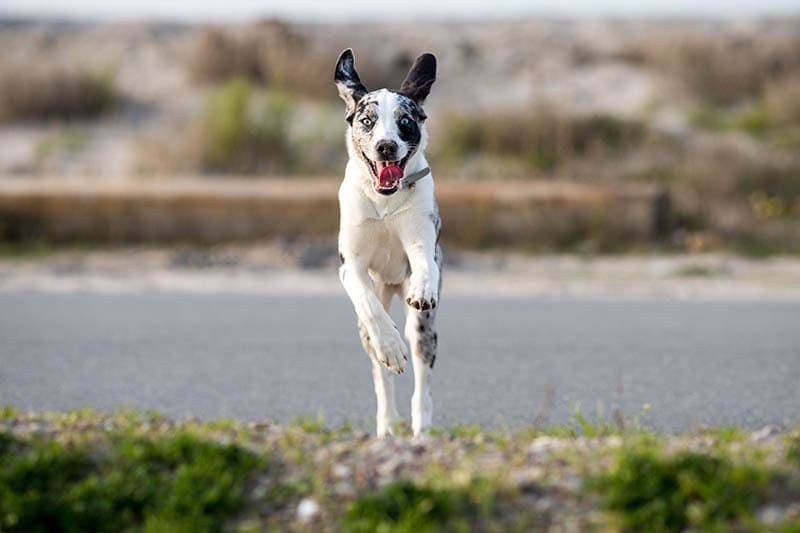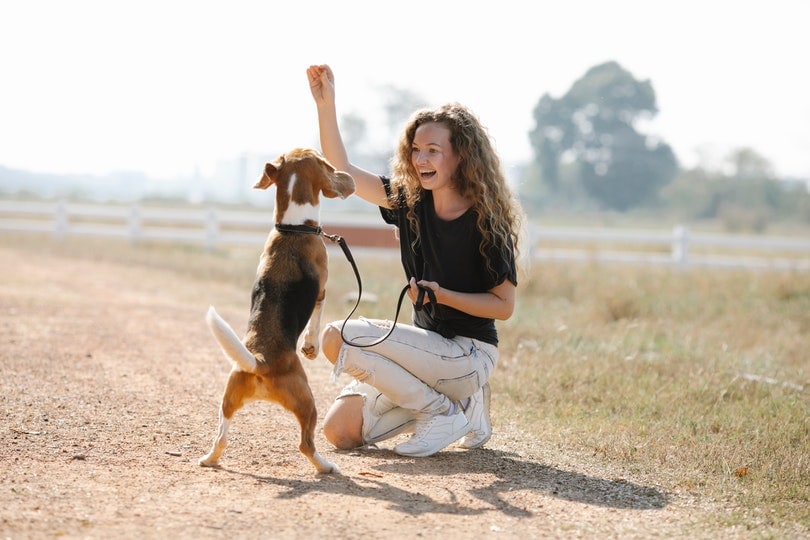Why Do Dogs Get the Zoomies? 6 Vet-Reviewed Reasons
By Adam Mann
Updated on

Have you ever noticed your dog go from 0 to 100 without warning? This behavior is known as “Frenetic Random Activity Period,” or FRAPs. But while that’s the scientific name, most people call them the “zoomies”.
While it can be surprising at times, the truth is that it’s a perfectly normal activity for most dogs. But why do dogs get the zoomies, and do you need to worry about them? Although research into the cause and function of zoomies is lacking, the following are generally accepted as reasons. Let’s dive in.
The 6 Typical Reasons Why Dogs Get the Zoomies
1. They’re Excited
This is by far the most likely reason your pup has the zoomies. Many dogs get the zoomies before you feed them, before you let them out, or before you take them out on a walk. These are some of their favorite activities, and it’s no coincidence that this is when your dog’s activity levels skyrocket.
When they’re excited, they don’t want to sit still, and often, you’ll see them rushing around your home or yard as a result.

2. They’re Anxious
While your dog might have the zoomies because they’re excited about something, it could also be because they’re anxious or nervous. If your dog doesn’t enjoy bath time and they know one’s coming, you might see them rushing around the house to avoid it.
Another common example is when you’re getting ready to leave the house. Many dogs suffer from separation anxiety, and sometimes they’ll display this by zooming around the house when they get cues that you’re getting ready to leave.
3. They’re Warming Up
Just like us if you have been sitting still for a long time your dog may feel the urge to get moving. Rather than ambling about, some dogs really go for it with a mad dash around the house.

4. They’re Happy
Dogs only have so many ways to show us they’re happy, and one way they can do it is with the zoomies. This is why you might see them zooming around when you come home from work or when they get to see someone they haven’t seen in a while.
When they’re happy, dogs want to move around, and you’ll often notice the zoomies take over a bit when good things happen to them!
5. Instincts
If your dog seems to have the zoomies at the same time each day no matter what’s going on, it might be because of primal instincts. Often, this coincides with deep-rooted hunting rhythms, and it’s just your pup’s way of dispelling some extra energy at certain points throughout the day.
If you know it’s coming, you can let them out somewhere they can safely run around and burn as much energy as possible. They’ll be happier with some space to run around, and you’ll be happy they’re not flying through your home!

When to Worry About the Zoomies
Most of the time, you don’t have to worry whether your dog has a little extra energy to burn through. However, there are a few times you need to watch out for the zoomies. This is especially true if your dog is on a slick surface.
This could be tile, laminate, or hardwood floors. If your dog is exhibiting this behavior in a potentially dangerous place, you don’t want to try and stop it completely. Instead, try to relocate and redirect them to a safer location.
Sudden pain resulting in your dog dashing about to get away from the pain can be mistaken on occasion for zoomies. However often they will yelp or give another sign that they have experienced a sudden pain such as a bee sting.
Finally, while most of the time the zoomies aren’t a sign of underlying problems, they can be. This is common if your pet spends too much time in a cage or doesn’t get outside as much as they need to. If you suspect this is the case, you need to do everything you can to try and get your dog out a bit more so they can meet their exercise needs throughout each day instead of all at once.
Conclusion
When your dog has a sudden burst of energy, all you need to do is find a safe place for them to let it out. It’s not something you usually need to worry about, as it’s perfectly normal behavior for most dogs.
Ensure you’re meeting your dog’s daily exercise needs, and from there, just accept that the zoomies are a perfectly normal part of a dog’s behavior.
Featured Image Credit by: Steve Bruckmann, Shutterstock














